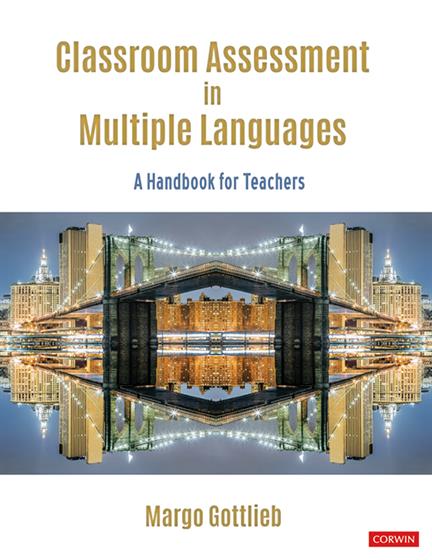Hands-on, Practical Guidance for Educators
From math,
literacy, equity, multilingual learners, and SEL, to assessment, school counseling,
and education leadership, our books are research-based and authored by experts
on topics most relevant to what educators are facing today.
Classroom Assessment in Multiple Languages
Foreword by Kathy Escamilla
What if multilingual learners had the freedom to interact in more than one language with their peers during classroom assessment? What if multilingual learners and their teachers in dual language settings had opportunities to use assessment data in multiple languages to make decisions? Just imagine the rich linguistic, academic, and cultural reservoirs we could tap as we determine what our multilingual learners know and can do.
Thankfully, Margo Gottlieb is here to provide concrete and actionable guidance on how to create assessment systems that enable understanding of the whole student, not just that fraction of the student who is only visible as an English learner. With Classroom Assessment in Multiple Languages as your guide, you’ll:
- Better understand the rationale for and evidence on the value and advantages of classroom assessment in multiple languages
- Add to your toolkit of classroom assessment practices in one or multiple languages
- Be more precise and effective in your assessment of multilingual learners by embedding assessment as, for, and of learning into your instructional repertoire
- Recognize how social-emotional, content, and language learning are all tied to classroom assessment
- Guide multilingual learners in having voice and choice in the assessment process
Despite the urgent need, assessment for multilingual learners is generally tucked into a remote chapter, if touched upon at all in a book; the number of resources narrows even more when multiple languages are brought into play. Here at last is that single resource on how educators and multilingual learners can mutually value languages and cultures in instruction and assessment throughout the school day and over time. We encourage you to get started right away.
“Margo Gottlieb has demonstrated why the field, particularly the field as it involves the teaching of multilingual learners, needs another assessment book, particularly a book like this. . . . Classroom Assessment in Multiple Languages quite likely could serve as a catalyst toward the beginning of an enlightened discourse around assessment that will benefit multilingual learners.”
~Kathy Escamilla
- Grade Level: PreK-12
- ISBN: 9781544384603
- Published By: Corwin
- Year: 2021
- Page Count: 264
- Publication date: January 19, 2021
Review Copies
Review copies may be requested by individuals planning to purchase 10 or more copies for a team or considering a book for adoption in a higher ed course. Request review copy - opens in a new tab - opens in a new tab
Other Titles in: Bilingual/ELL Learners | Teaching Strategies for Diverse Students | Student Assessment



